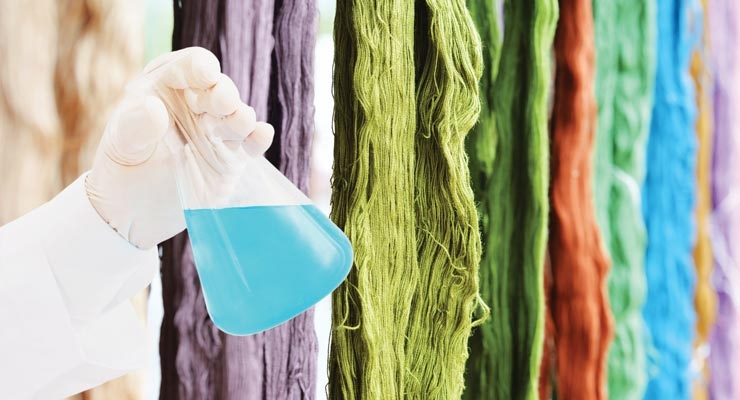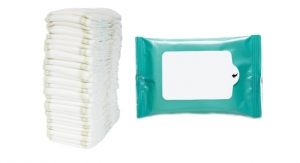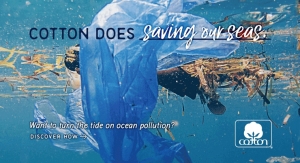12.10.19
By Nick Carter, Director of Market Business Intelligence and Intellectual Property at Avgol
The nonwovens sector has a great deal to look forward to in the coming year, alongside a number of new challenges. Fibre2Fashion recently noted that the global market is set to grow to a value of $50 billion by the close of 2020, strengthened by a rapidly growing hygiene segment. The outlook is good.
The Asia-Pacific region in particular is projected to demonstrate significant growth, supported by continuously expanding manufacturing infrastructure. The Asian market accounted for 43% of global nonwovens marketshare just four years ago, a figure expected to exceed 47% within the next 12 months. This rapid growth is demonstrative of the accelerating Indian and Chinese economies, which are incorporating nonwoven textiles in a broad spectrum of applications, including geotextiles and the burgeoning automotive industry. It is precisely because of this rapid market expansion that Avgol has put a great deal of focus on the Asian market, investing in a number of specialist technologies and initiatives to capitalize on the burgeoning market, strengthened by a growing manufacturing presence in China and India.
In recent years, nonwoven textiles have been one of the fastest growing subsegments in the industry, which speaks highly of the innovation and development of the material. A key driver has been the increased application of nonwoven textiles in high-value goods, enabled by core investment in performance and quality.
Where once nonwovens were simply an alternative to woven and knit substrates, the market has enjoyed expansion into a significant number of new sectors as the capability and performance of the substrate increases.
Cascade Effect
Perhaps the most significant point of note when considering nonwovens sector progress in 2020 is that it will mark a cascade effect of current market trends. The industry has come a long way in a relatively short period of time, galvanized by substrate and manufacturing innovation that has been reinvigorated to meet the evolving demands of modern retailing.
Investment in nonwoven fabric development is currently at an all-time peak and as value-led innovation infiltrates the market driving true competitive edge for brands, the supply chain has never been more connected with the end user. This indicates to brands and manufacturers that the emerging trends over the last several years will begin to overlap more significantly, meaning that substrates, and the products that are derived, will be required to fulfil a wider number of roles and applications. Driving value into base materials is one way to achieve this, and so key players are exploring new substrate alternatives for existing products.
Consumers & Product Ownership
One of the most significant changes to the nonwoven supply chain in 2020 is the way in which consumer products are now being selected and purchased and consequently, how they are designed and marketed from the outset. As we consider the direction of the industry, it is important to understand that the burgeoning omnichannel retail landscape has created seismic changes in product origination and development strategies across a very broad spectrum of manufacturing industries; nonwovens being no exception.
The retailing environment today is at the center of a changing buyer/seller dynamic that puts the power firmly back in the hands of the market. Brands today succeed and fail by how they meet customer demands and the hygiene industry is no exception. As a consequence of how today’s buying market has evolved, consumers are seeking a more personal connection with the brands they purchase from. Ultimately, they want ‘an experience’ and ‘aligned values,’ not simply ownership of a product.
Consumers that had historically selected products based on fairly logical choices are now making purchase decisions that consider brand values and lifestyles as priorities. Within the hygiene sector, the consumer’s need for values alignment and engagement is often driven by a combination of emotional and practical needs; for example the well being of a loved one combined with environmental sensitivity, together with purchasing value.
When looking at the retail landscape from the outside-in, the challenge becomes clear. Alongside saturated markets and wide product choices, customer loyalty becomes harder to achieve and retain; and all the more critical to business success. It has been highlighted in a number of commercial studies that brand loyalty is generally decreasing across the board. In response, many brands in both B2B and B2C markets are looking to new and innovative ways to communicate their business values and ethos with their target audiences. For many, this is endeavouring to foster the highly prized connection of empathy between business and consumer.
Increased Need for Market Differentiation
Hand in hand with increased consumer choice is the growing imperative of brands to differentiate. The goal is to stand out on busy shelves, which means taking advantage of any competitive edge that can be leveraged. One common question when developing new products for any market is then “should the product dictate the positioning or should positioning lead the design of the product?”
If the market direction is to be believed, the hygiene retail sector demands the former. The advantages and key differentiators of the product need to feature prominently and tell the story of why one particular product is the superior choice over its competitors.
For manufacturers and brands alike, this means building benefits into the product from the very beginning of the supply chain. It is because of this need that Avgol has invested so readily in nonwoven technology; the company has seen the tangible value of a substrate that delivers competitive edge from the very outset of production. In 2020, it will be more important than ever to mark out key areas of differentiation at the product design phase and select substrates that simply offer more.
This growing need has been highlighted by an increasing demand for specialized webs, very much reflected in Avgol’s increasing investments in the Pan-Asian market including plants in India and China, where specialized nonwovens enjoy a heightened presence in filtration, hygiene, geotextiles, automotive and construction applications.
Increased Need for Product Variants
Significantly, when exploring the opportunity to differentiate one hygiene product from its competitors and deliver shelf appeal, there are four central variant pillars to explore, each of which present further questions and considerations for hygiene brands.
SKU Proliferation
The days of long production runs of the same materials are largely done. As we look to 2020, profitability today relies on agility as much as capacity. Very much a product of shifting consumer needs, stock keeping unit (SKU) proliferation ultimately increases the number of distinct products that a brand offers its customers. In combination with slow-moving or obsolete stock creating a logistical bottleneck, SKU proliferation has pros and cons throughout the supply chain. Being able to offer customers what they want in a more precise way certainly increases the likelihood of sales but attracts additional costs both financially and administratively in managing the supply chain complexity.
E-commerce has compounded the problem; customers now have escalating expectations of courier and delivery speeds meaning retailers need to hold more items in stock, in many cases without exponentially bigger storage capacity. What’s more, the technology driving product development is as efficient as it has ever been boosting the speed to market of new hygiene product ranges and SKUs. For 2020, this indicates opportunity for change in the production process. Manufacturing equipment needs to be more flexible than it has been previously but retain the ability for long runs, while being optimized for rapid changeovers to ensure consistent productivity.
Part and parcel of a more malleable and agile production capability is the ability to introduce new material and design variants at a faster pace, thereby meeting consumer needs quickly and effectively. Again, this comes with increased overall cost to deliver but is compensated by customer loyalty and long-term sales, a key requirement of successful business.
Heightened Value Proposition
Investment in nonwoven technology has created a material that has organically expanded the market as its capability has increased. As the substrate enters more consumer-facing markets, it is set to contribute to an increasingly wide array of products. A popular way to visualize its value proposition is a venn diagram featuring benefits, features and experience in the outer circles with a core value proposition at the center, demonstrating the combination of factors at play.
Economist and marketer Daniel Burstein considered value propositions in a different way - as a dichotomy between value and cost forces. For every purchase decision made, consumers weight ‘cost force’, the physical price of the product, against ‘value force’, the benefits, appeal and exclusivity. His theory states that if a product does not have a strong value force, the cost force has to be reduced to make the sale. To this end, a strong value proposition is also protection for the product in terms of image and reputation. This is particularly significant in the dawn of premiumization, which bestows greater perceived value on products with a higher cost price.
As the need to build core value into products grows, businesses such as Avgol have readily invested in material research initiatives, identifying that customers demand more from the products they buy and will continue to do so throughout 2020.
The growing demand for inbuilt value is the key driver behind the Avgol FIT family of technologies. Designed by Avgol to anticipate the needs of today’s consumers, the high-performance technologies cleverly meet the manifold demands of modern omnichannel commerce, lending a stronger value force to the products they are applied to.
Building tangible benefits and qualities directly into the substrate, without the need for additional processes further downstream in the production process, enables manufacturers and retailers to meet the holistic needs of the consumer in 2020 and beyond. The suite of FIT technologies and its modular range design also means that product variants are easier to develop and achieve for brands. BeneFIT Care, for example, offers an improved user experience by creating a healthy skin environment. The technology focuses on wellness by including beneficial nutrient oils and minerals to reduce friction, buffering acidity for skin wellness and absorbing odors, providing a real boost to the value force of the product. ComfortFIT Feel in contrast features cotton-like spunmelt material to create a new level of softness in applications such as diapers and hygiene products, reducing the sense of ‘plastic-feel’ without introducing copolymers.
Excitingly, Avgol has also developed the innovative haptic technology Waveform 3D. Set to change the rules on material capability, it bestows three-dimensional qualities onto the flat substrate through a unique design and forming process. Waveform 3D affords product designers greater flexibility with how applications look, feel and function in combination. Using apertured, solid or patterned surfaces, the three-dimensional composition can be used to provide a number of customer-facing design benefits including advanced skin-wellness through fluid management and breathability, as well as greater cushioning and enhanced cotton-feel.
As today’s consumers demand more practicality, quality and capability from products, particularly within a saturated market, Waveform 3D offers a new dimension of material capability, making it easier than ever for brands to harness nonwoven textiles as a real competitive advantage and truly stand out.
In Summary
2020 is shaping up to be a year of great potential for the nonwovens sector. The growing market—both in terms of geographies and sectors—offers palpable opportunities for the entire supply chain, from nonwoven manufacturers to brands. To make the most of them, value, communication, innovation and supply chain efficiency will be absolutely crucial.
With the growing demands of diversification and value proposition-led product development ahead, we take a holistic approach to product development by imbuing Avgol nonwoven substrates with qualities that build value forces into products from the design outset. To the consumer, this adds seamless benefits into the fundamental premise of the product and to the brand and retailer, it presents a very strong argument on the store shelf.
Continued investment will be critical to unlocking the potential of nonwovens; the industry has a come a long way in a relatively short space of time and for many of us, the key to success will be continuing this momentum long beyond 2020.
The nonwovens sector has a great deal to look forward to in the coming year, alongside a number of new challenges. Fibre2Fashion recently noted that the global market is set to grow to a value of $50 billion by the close of 2020, strengthened by a rapidly growing hygiene segment. The outlook is good.
The Asia-Pacific region in particular is projected to demonstrate significant growth, supported by continuously expanding manufacturing infrastructure. The Asian market accounted for 43% of global nonwovens marketshare just four years ago, a figure expected to exceed 47% within the next 12 months. This rapid growth is demonstrative of the accelerating Indian and Chinese economies, which are incorporating nonwoven textiles in a broad spectrum of applications, including geotextiles and the burgeoning automotive industry. It is precisely because of this rapid market expansion that Avgol has put a great deal of focus on the Asian market, investing in a number of specialist technologies and initiatives to capitalize on the burgeoning market, strengthened by a growing manufacturing presence in China and India.
In recent years, nonwoven textiles have been one of the fastest growing subsegments in the industry, which speaks highly of the innovation and development of the material. A key driver has been the increased application of nonwoven textiles in high-value goods, enabled by core investment in performance and quality.
Where once nonwovens were simply an alternative to woven and knit substrates, the market has enjoyed expansion into a significant number of new sectors as the capability and performance of the substrate increases.
Cascade Effect
Perhaps the most significant point of note when considering nonwovens sector progress in 2020 is that it will mark a cascade effect of current market trends. The industry has come a long way in a relatively short period of time, galvanized by substrate and manufacturing innovation that has been reinvigorated to meet the evolving demands of modern retailing.
Investment in nonwoven fabric development is currently at an all-time peak and as value-led innovation infiltrates the market driving true competitive edge for brands, the supply chain has never been more connected with the end user. This indicates to brands and manufacturers that the emerging trends over the last several years will begin to overlap more significantly, meaning that substrates, and the products that are derived, will be required to fulfil a wider number of roles and applications. Driving value into base materials is one way to achieve this, and so key players are exploring new substrate alternatives for existing products.
Consumers & Product Ownership
One of the most significant changes to the nonwoven supply chain in 2020 is the way in which consumer products are now being selected and purchased and consequently, how they are designed and marketed from the outset. As we consider the direction of the industry, it is important to understand that the burgeoning omnichannel retail landscape has created seismic changes in product origination and development strategies across a very broad spectrum of manufacturing industries; nonwovens being no exception.
The retailing environment today is at the center of a changing buyer/seller dynamic that puts the power firmly back in the hands of the market. Brands today succeed and fail by how they meet customer demands and the hygiene industry is no exception. As a consequence of how today’s buying market has evolved, consumers are seeking a more personal connection with the brands they purchase from. Ultimately, they want ‘an experience’ and ‘aligned values,’ not simply ownership of a product.
Consumers that had historically selected products based on fairly logical choices are now making purchase decisions that consider brand values and lifestyles as priorities. Within the hygiene sector, the consumer’s need for values alignment and engagement is often driven by a combination of emotional and practical needs; for example the well being of a loved one combined with environmental sensitivity, together with purchasing value.
When looking at the retail landscape from the outside-in, the challenge becomes clear. Alongside saturated markets and wide product choices, customer loyalty becomes harder to achieve and retain; and all the more critical to business success. It has been highlighted in a number of commercial studies that brand loyalty is generally decreasing across the board. In response, many brands in both B2B and B2C markets are looking to new and innovative ways to communicate their business values and ethos with their target audiences. For many, this is endeavouring to foster the highly prized connection of empathy between business and consumer.
Increased Need for Market Differentiation
Hand in hand with increased consumer choice is the growing imperative of brands to differentiate. The goal is to stand out on busy shelves, which means taking advantage of any competitive edge that can be leveraged. One common question when developing new products for any market is then “should the product dictate the positioning or should positioning lead the design of the product?”
If the market direction is to be believed, the hygiene retail sector demands the former. The advantages and key differentiators of the product need to feature prominently and tell the story of why one particular product is the superior choice over its competitors.
For manufacturers and brands alike, this means building benefits into the product from the very beginning of the supply chain. It is because of this need that Avgol has invested so readily in nonwoven technology; the company has seen the tangible value of a substrate that delivers competitive edge from the very outset of production. In 2020, it will be more important than ever to mark out key areas of differentiation at the product design phase and select substrates that simply offer more.
This growing need has been highlighted by an increasing demand for specialized webs, very much reflected in Avgol’s increasing investments in the Pan-Asian market including plants in India and China, where specialized nonwovens enjoy a heightened presence in filtration, hygiene, geotextiles, automotive and construction applications.
Increased Need for Product Variants
Significantly, when exploring the opportunity to differentiate one hygiene product from its competitors and deliver shelf appeal, there are four central variant pillars to explore, each of which present further questions and considerations for hygiene brands.
- Competitive – Does the product mark out its own benefits over those of competitor solutions? Are they clearly communicated? Could an adapted version offer more to obviously separate the brand?
- Consumer acceptance – How do we tackle cognitive dissonance in customers and potential customers and how do we identify it in the first instance? Would pro-actively incorporating a solution into the product, packaging and branding make it preferable to competitor products?
- Producer branding – What is the tone of the market and what are consumers looking for? Is the branding consistent and does it align with the values? Could a rebranded variant help a hygiene product stand out on the shelves?
- Intra-product tiers – If the product sits within a saturated market, could smaller variations that provide more options win out?
SKU Proliferation
The days of long production runs of the same materials are largely done. As we look to 2020, profitability today relies on agility as much as capacity. Very much a product of shifting consumer needs, stock keeping unit (SKU) proliferation ultimately increases the number of distinct products that a brand offers its customers. In combination with slow-moving or obsolete stock creating a logistical bottleneck, SKU proliferation has pros and cons throughout the supply chain. Being able to offer customers what they want in a more precise way certainly increases the likelihood of sales but attracts additional costs both financially and administratively in managing the supply chain complexity.
E-commerce has compounded the problem; customers now have escalating expectations of courier and delivery speeds meaning retailers need to hold more items in stock, in many cases without exponentially bigger storage capacity. What’s more, the technology driving product development is as efficient as it has ever been boosting the speed to market of new hygiene product ranges and SKUs. For 2020, this indicates opportunity for change in the production process. Manufacturing equipment needs to be more flexible than it has been previously but retain the ability for long runs, while being optimized for rapid changeovers to ensure consistent productivity.
Part and parcel of a more malleable and agile production capability is the ability to introduce new material and design variants at a faster pace, thereby meeting consumer needs quickly and effectively. Again, this comes with increased overall cost to deliver but is compensated by customer loyalty and long-term sales, a key requirement of successful business.
Heightened Value Proposition
Investment in nonwoven technology has created a material that has organically expanded the market as its capability has increased. As the substrate enters more consumer-facing markets, it is set to contribute to an increasingly wide array of products. A popular way to visualize its value proposition is a venn diagram featuring benefits, features and experience in the outer circles with a core value proposition at the center, demonstrating the combination of factors at play.
Economist and marketer Daniel Burstein considered value propositions in a different way - as a dichotomy between value and cost forces. For every purchase decision made, consumers weight ‘cost force’, the physical price of the product, against ‘value force’, the benefits, appeal and exclusivity. His theory states that if a product does not have a strong value force, the cost force has to be reduced to make the sale. To this end, a strong value proposition is also protection for the product in terms of image and reputation. This is particularly significant in the dawn of premiumization, which bestows greater perceived value on products with a higher cost price.
As the need to build core value into products grows, businesses such as Avgol have readily invested in material research initiatives, identifying that customers demand more from the products they buy and will continue to do so throughout 2020.
The growing demand for inbuilt value is the key driver behind the Avgol FIT family of technologies. Designed by Avgol to anticipate the needs of today’s consumers, the high-performance technologies cleverly meet the manifold demands of modern omnichannel commerce, lending a stronger value force to the products they are applied to.
Building tangible benefits and qualities directly into the substrate, without the need for additional processes further downstream in the production process, enables manufacturers and retailers to meet the holistic needs of the consumer in 2020 and beyond. The suite of FIT technologies and its modular range design also means that product variants are easier to develop and achieve for brands. BeneFIT Care, for example, offers an improved user experience by creating a healthy skin environment. The technology focuses on wellness by including beneficial nutrient oils and minerals to reduce friction, buffering acidity for skin wellness and absorbing odors, providing a real boost to the value force of the product. ComfortFIT Feel in contrast features cotton-like spunmelt material to create a new level of softness in applications such as diapers and hygiene products, reducing the sense of ‘plastic-feel’ without introducing copolymers.
Excitingly, Avgol has also developed the innovative haptic technology Waveform 3D. Set to change the rules on material capability, it bestows three-dimensional qualities onto the flat substrate through a unique design and forming process. Waveform 3D affords product designers greater flexibility with how applications look, feel and function in combination. Using apertured, solid or patterned surfaces, the three-dimensional composition can be used to provide a number of customer-facing design benefits including advanced skin-wellness through fluid management and breathability, as well as greater cushioning and enhanced cotton-feel.
As today’s consumers demand more practicality, quality and capability from products, particularly within a saturated market, Waveform 3D offers a new dimension of material capability, making it easier than ever for brands to harness nonwoven textiles as a real competitive advantage and truly stand out.
In Summary
2020 is shaping up to be a year of great potential for the nonwovens sector. The growing market—both in terms of geographies and sectors—offers palpable opportunities for the entire supply chain, from nonwoven manufacturers to brands. To make the most of them, value, communication, innovation and supply chain efficiency will be absolutely crucial.
With the growing demands of diversification and value proposition-led product development ahead, we take a holistic approach to product development by imbuing Avgol nonwoven substrates with qualities that build value forces into products from the design outset. To the consumer, this adds seamless benefits into the fundamental premise of the product and to the brand and retailer, it presents a very strong argument on the store shelf.
Continued investment will be critical to unlocking the potential of nonwovens; the industry has a come a long way in a relatively short space of time and for many of us, the key to success will be continuing this momentum long beyond 2020.










